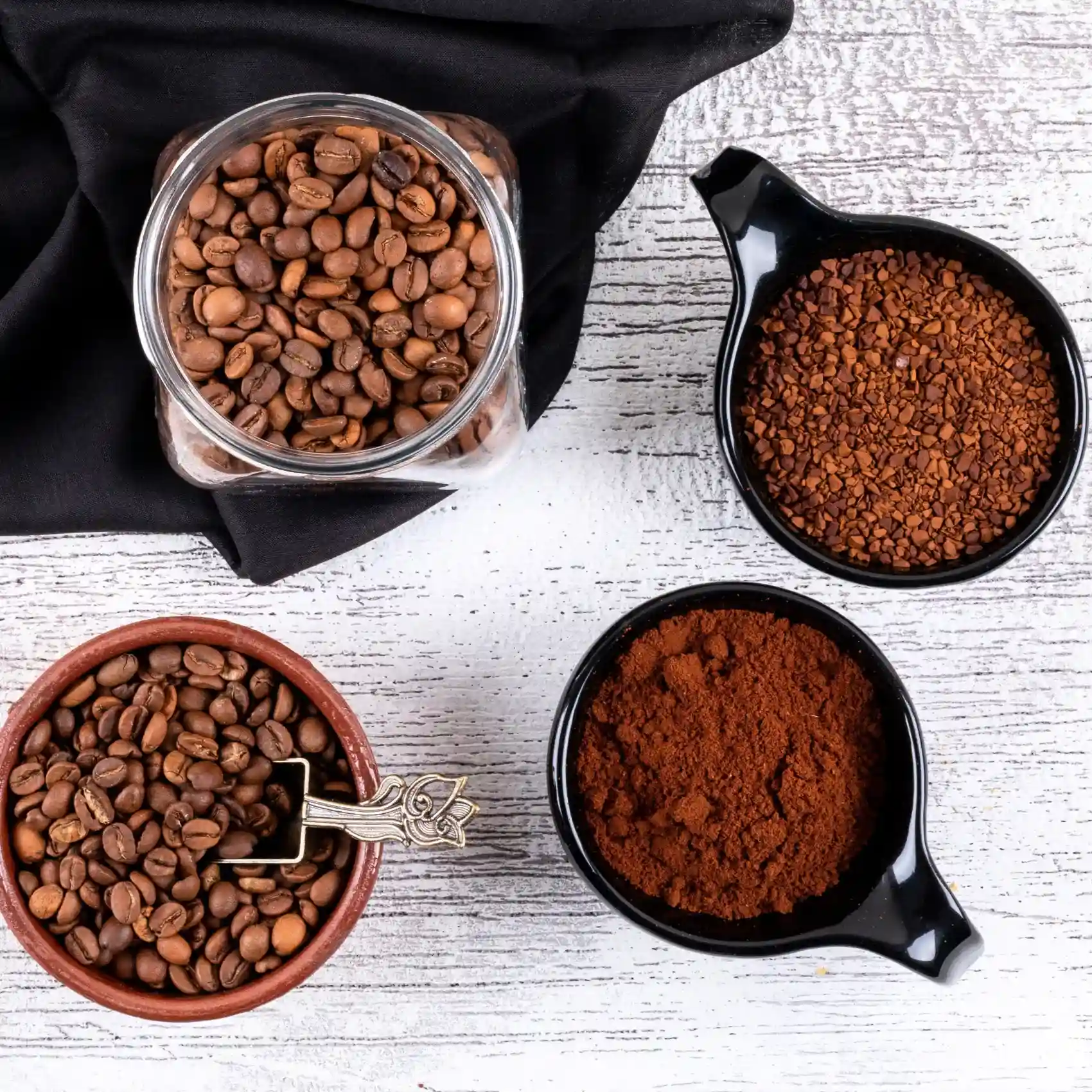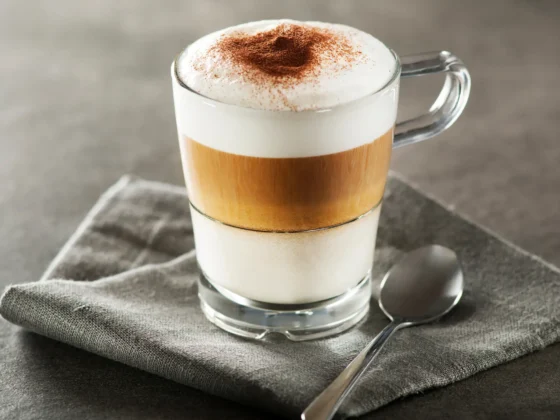Comprehending the complexities of various coffee products is essential in the ever-evolving coffee industry, whether you’re savoring a cup or incorporating them into your culinary endeavors. Espresso Powder vs. Instant Espresso: A Comprehensive Comparison delves into the distinct characteristics, uses, and considerations of these two popular coffee derivatives. While they may sound similar, these two products serve different purposes and cater to varying preferences. This article aims to provide a detailed exploration of each, highlighting their unique attributes, from flavor profiles and brewing methods to culinary applications.
Instant Espresso vs Espresso Powder: An Introduction
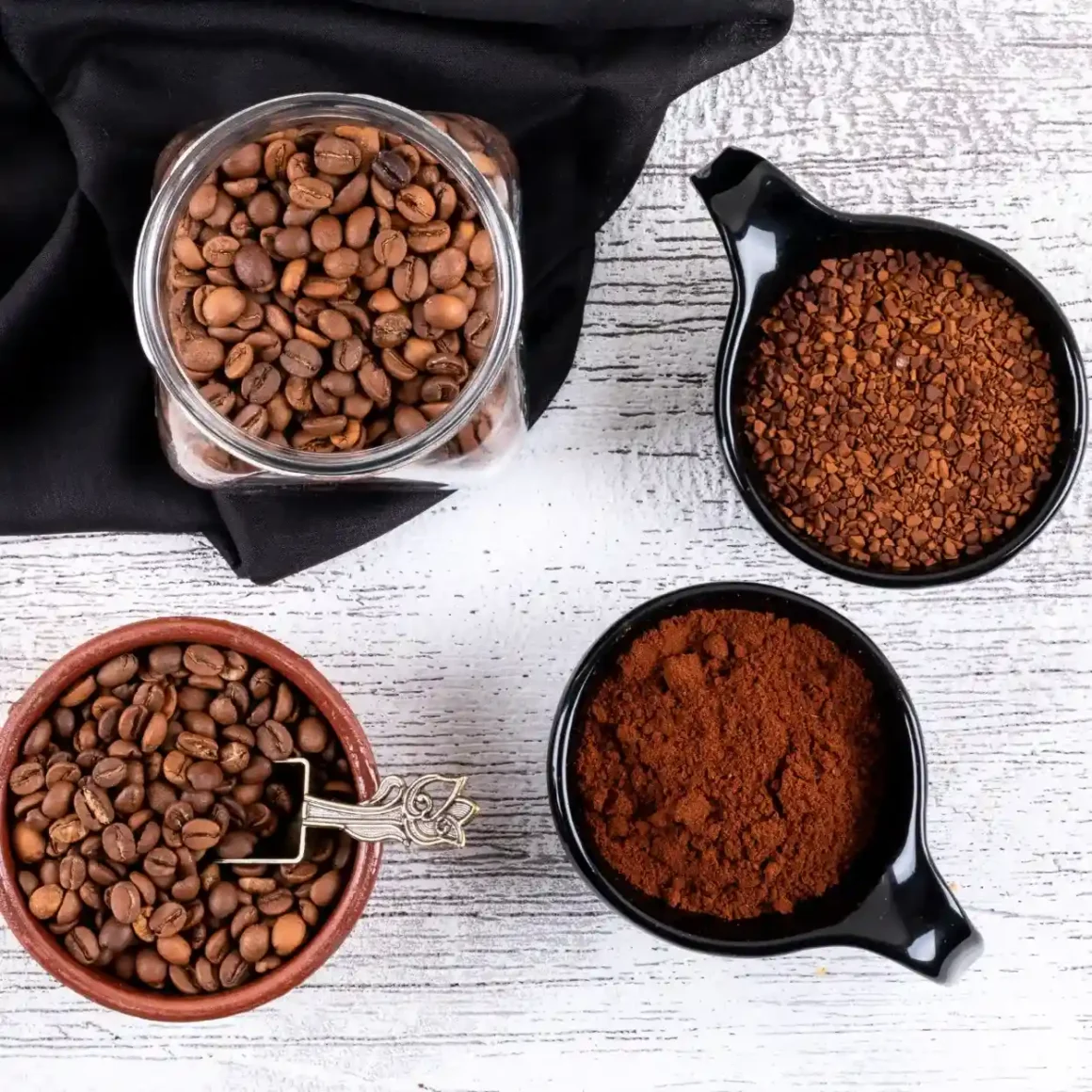
Espresso coffee, a popular beverage across the world, has inspired many forms of its essence for diverse culinary applications. Espresso Powder and Instant Espresso are two such varieties, each with its own set of qualities and applications. While they may appear to be identical at first look, recognizing their distinctions is critical for both coffee fans and culinary specialists.
What is Espresso Powder?
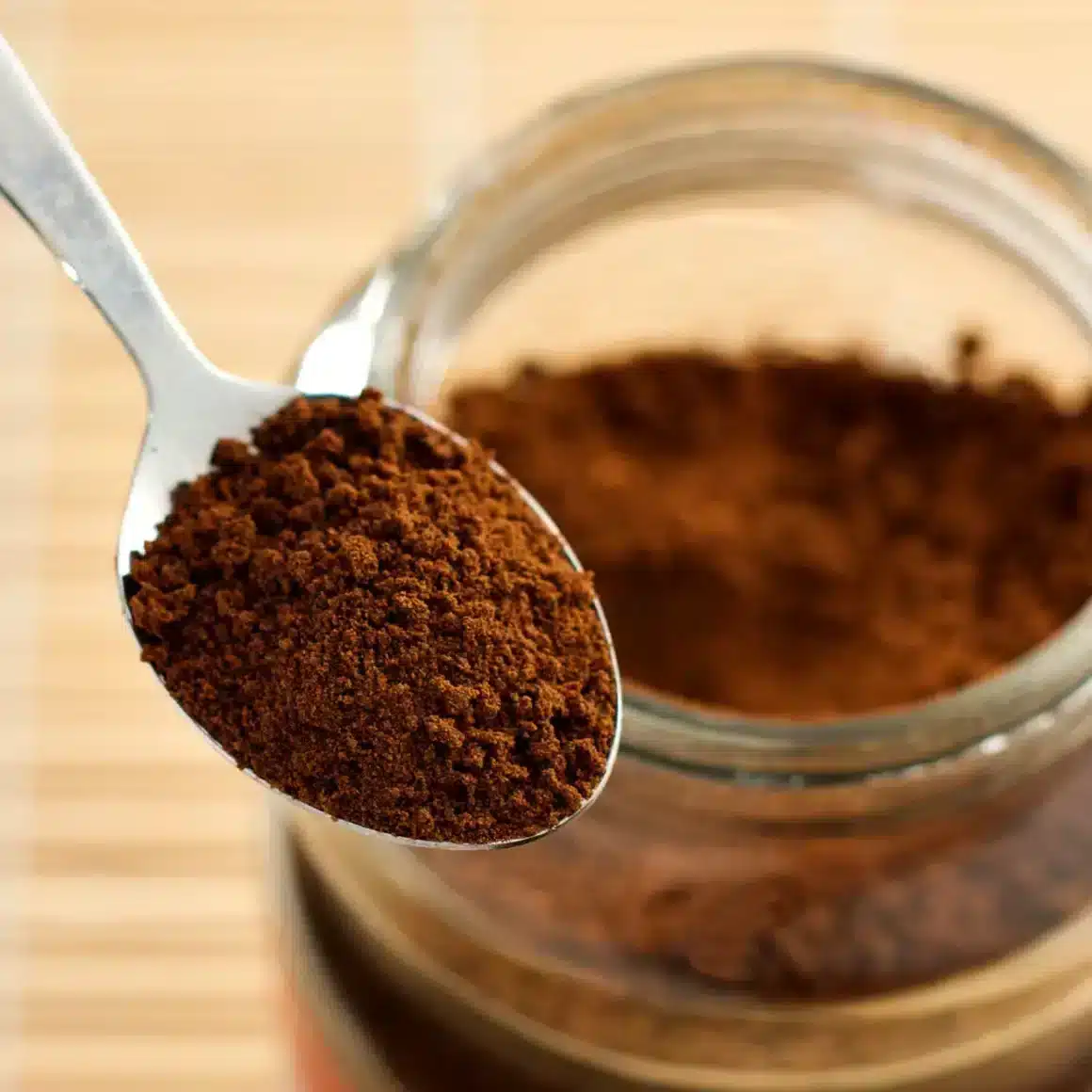
When it comes to coffee and its myriad derivatives, one fascinating product that frequently piques interest is this coffee powder.
- Origin and Process: This powder originates from darkly roasted coffee beans. These beans are brewed, dried, and then ground into a very fine powder. This process ensures the retention of the espresso’s strong, concentrated flavor.
- Culinary Uses: Unlike regular coffee grounds, this coffee powder is not typically used for drinking. Instead, it’s a popular ingredient in baking and cooking, known for enhancing the flavor of chocolates, cakes, and even savory dishes without imparting a distinct coffee taste. (1)
What is Instant Espresso?
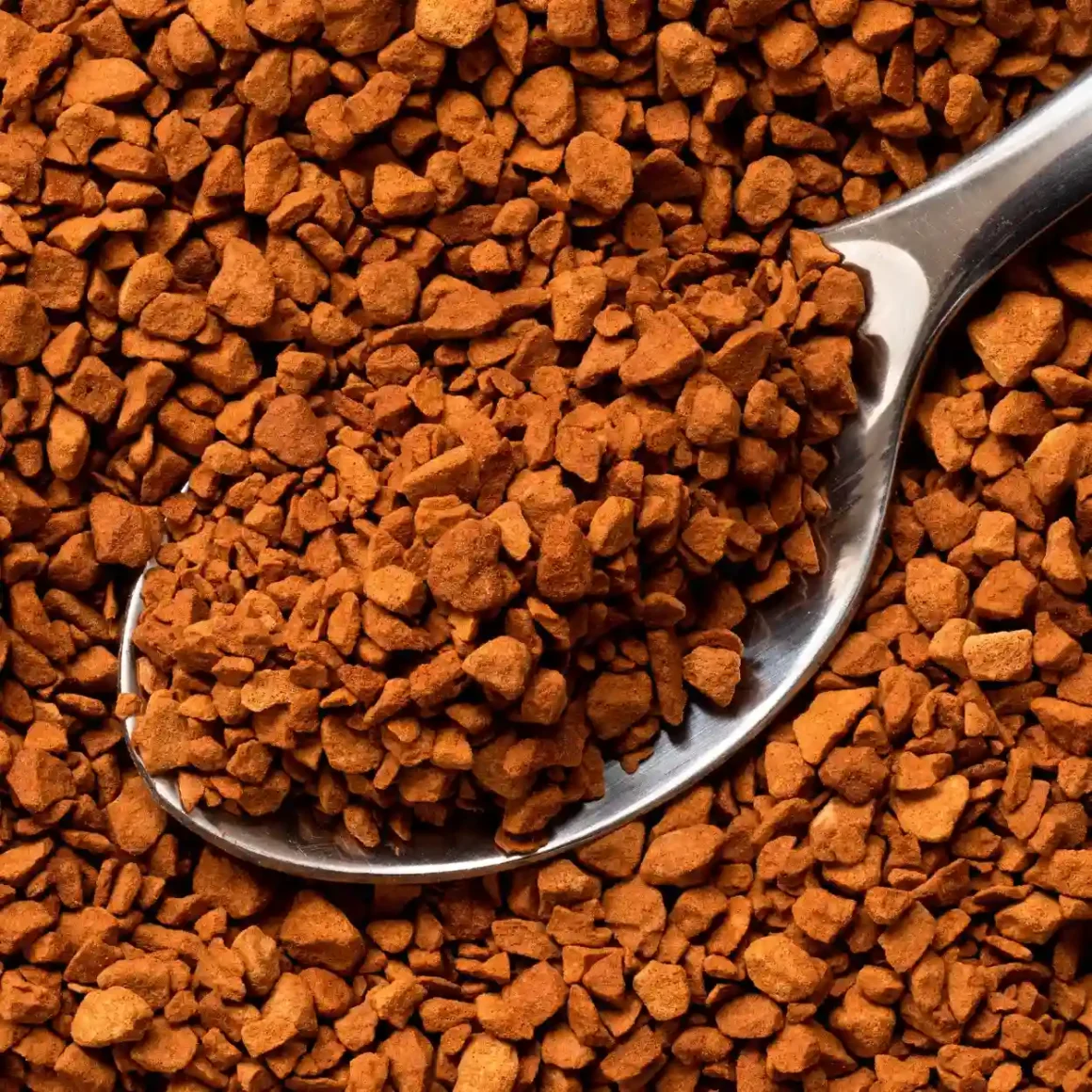
Instant Espresso fills a distinct niche in the global market of instant coffee fixes and espresso addictions.
- Instant Creation: this coffee product is made from brewed espresso beans that are freeze-dried or spray-dried into crystals. This process preserves the flavor and aroma of espresso, allowing it to be reconstituted with hot water.
- Beverage Focus: The primary use of this product is as a quick and convenient way to enjoy an espresso-like beverage. It dissolves easily in hot water, offering a close approximation to freshly brewed espresso in terms of taste and aroma, albeit with some compromises.
Differentiating Factors
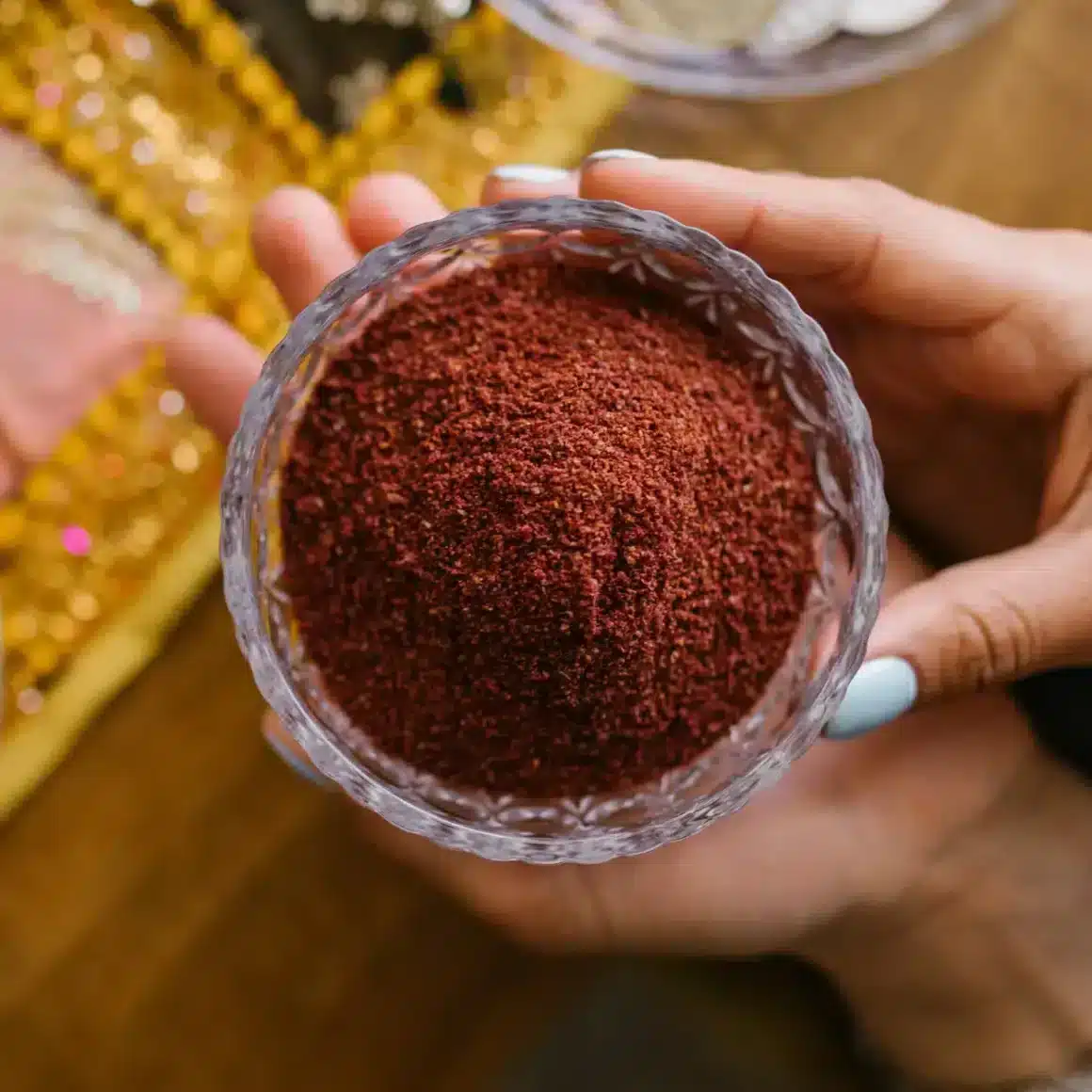
When it comes to Espresso Powder vs Instant Espresso, several factors set them apart.
- Purpose and Use: The key difference lies in their intended use. Espresso Powder is mainly a cooking and baking ingredient, while Instant Espresso is designed for drinking.
- Flavor Intensity: This coffee powder tends to be more intense and concentrated, making it ideal for flavoring foods, whereas Instant Espresso is more balanced for drinking.
- Preparation Method: The preparation of this coffee powder involves a more elaborate process compared to the relatively straightforward method of creating the instant version.
In summary, when it comes to these coffee derivatives, it’s important to recognize that despite their common origin in espresso beans, they diverge significantly in terms of their applications, taste characteristics, and preparation procedures.
What About Instant Espresso Powder vs Instant Coffee?
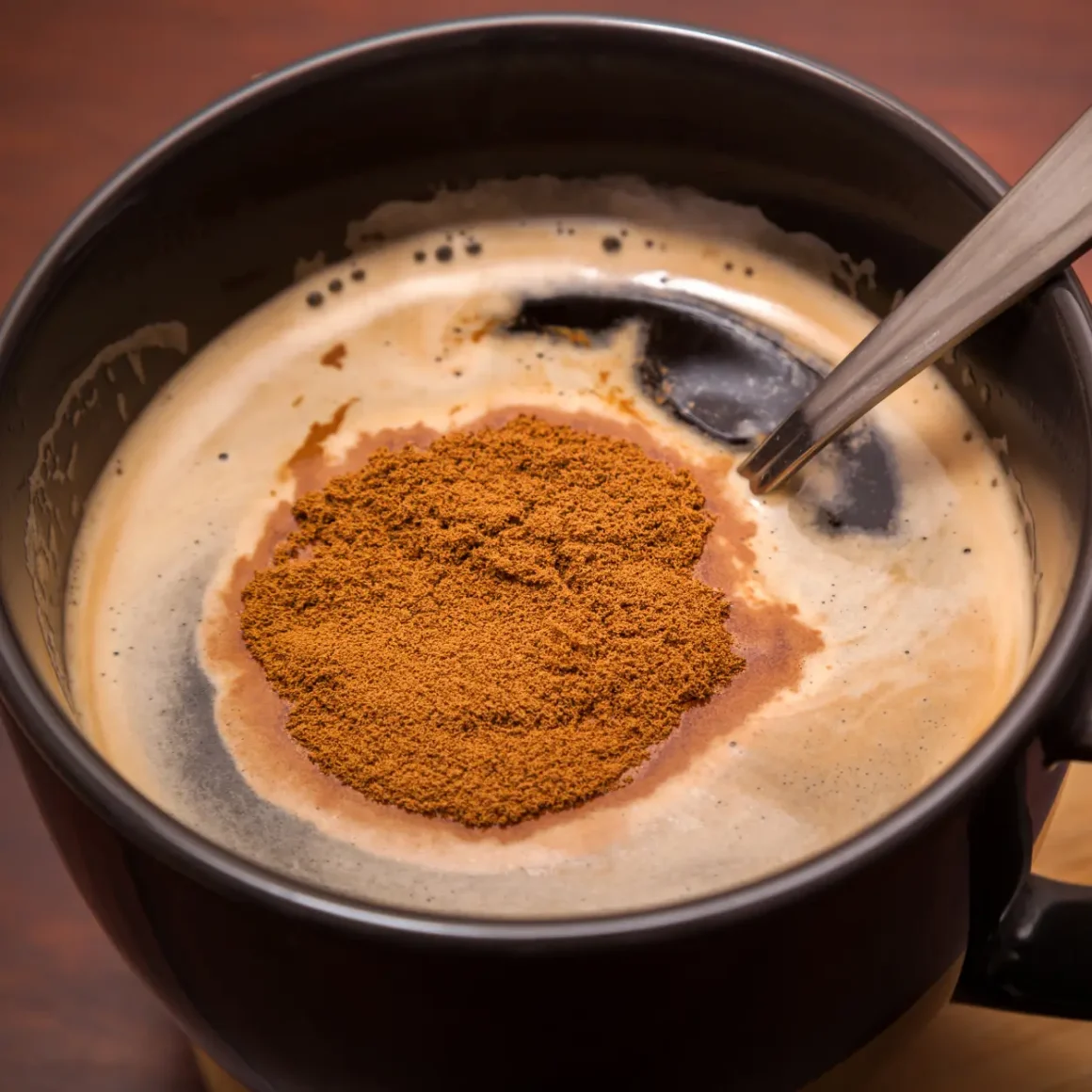
When comparing instant espresso powder vs instant coffee, the key differences lie in their flavor profiles, caffeine content, and preferred usage scenarios:
- Flavor Intensity: Instant Espresso Powder is known for its rich and robust flavor, resembling a traditional espresso. This makes it ideal for those who seek a strong coffee experience. In contrast, Instant Coffee offers a milder taste, similar to regular brewed coffee, suitable for everyday drinking preferences.
- Caffeine Content: Generally, the instant powder of espresso contains more caffeine compared to Instant Coffee. This aspect is significant for individuals who are mindful of their caffeine intake.
- Preparation and Solubility: Both are designed for quick preparation, easily dissolving in hot water. The instant powder of espresso, with its finer texture, may be preferred in situations where a smoother coffee base is desired.
To sum up, the choice between instant coffee vs instant espresso powder depends on your taste preferences and caffeine requirements. The instant powder of espresso is ideal for a strong, intense coffee flavor, while Instant Coffee is more suitable for those who prefer a lighter, more balanced coffee taste.
Espresso Powder and Instant Espresso – Production and Ingredients
These coffee derivatives are two distinct products, each with its unique production process and ingredient composition. While they are often thought to be similar, their differences in production and ingredients cater to different uses and preferences.
Espresso Powder Production
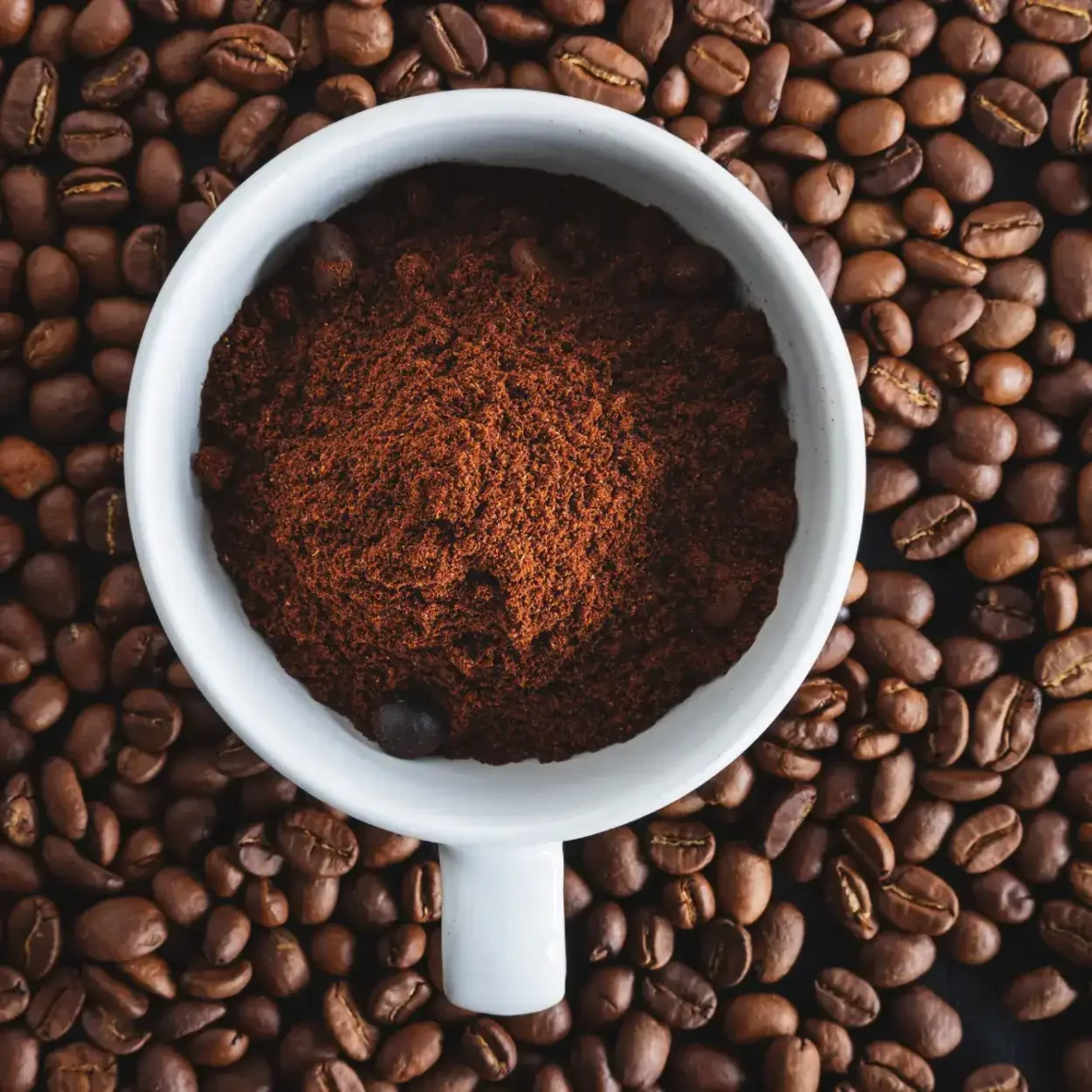
Let’s have a look at the production method of this coffee powder to better understand it.
- Roasting and Grinding: The journey of this powder begins with selecting high-quality coffee beans, which are then darkly roasted. This roasting process is crucial as it develops the deep, rich flavors characteristic of espresso. After roasting, these beans are ground finely.
- Brewing and Drying: The ground beans are then brewed to make a concentrated espresso. This brewed espresso is subsequently dried, either through freeze-drying or spray-drying techniques. (2) The drying process is meticulously managed to preserve the intense flavor and aroma.
- Final Product: The result is a very fine, powder-like substance. As previously mentioned, it’s not intended for brewing a drink but is used primarily as a flavor enhancer in baking and cooking, adding a rich coffee flavor to various dishes.
Instant Espresso Production
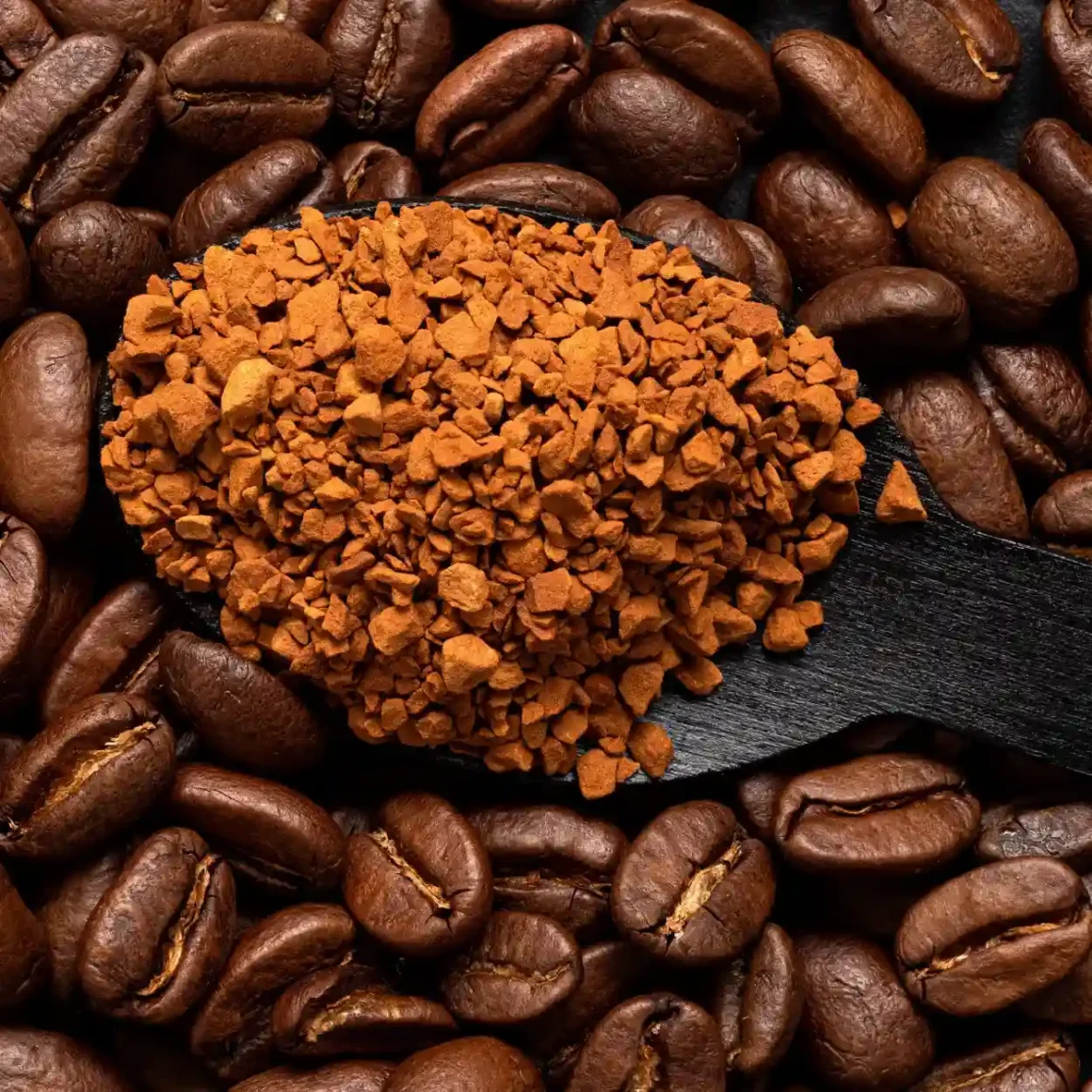
The production of this coffee derivative involves a unique set of steps to deliver a quick and convenient espresso-like experience.
- Bean Selection and Roasting: Similar to Espresso Powder, the instant version also starts with selecting quality coffee beans. These beans are roasted, but the roasting level might vary slightly to optimize the flavor for instant brewing.
- Brewing and Freeze-Drying: The roasted beans are brewed into espresso and then subjected to freeze-drying. This approach involves freezing the liquid espresso, followed by a drop in ambient pressure that allows the solidified water to transform directly from a solid state into a gaseous one.
- Granular Form: The end product is granular, designed to dissolve quickly in hot water. This makes this coffee product a convenient option for those wanting a quick espresso-like drink without the need for an espresso machine.
Ingredients Comparison
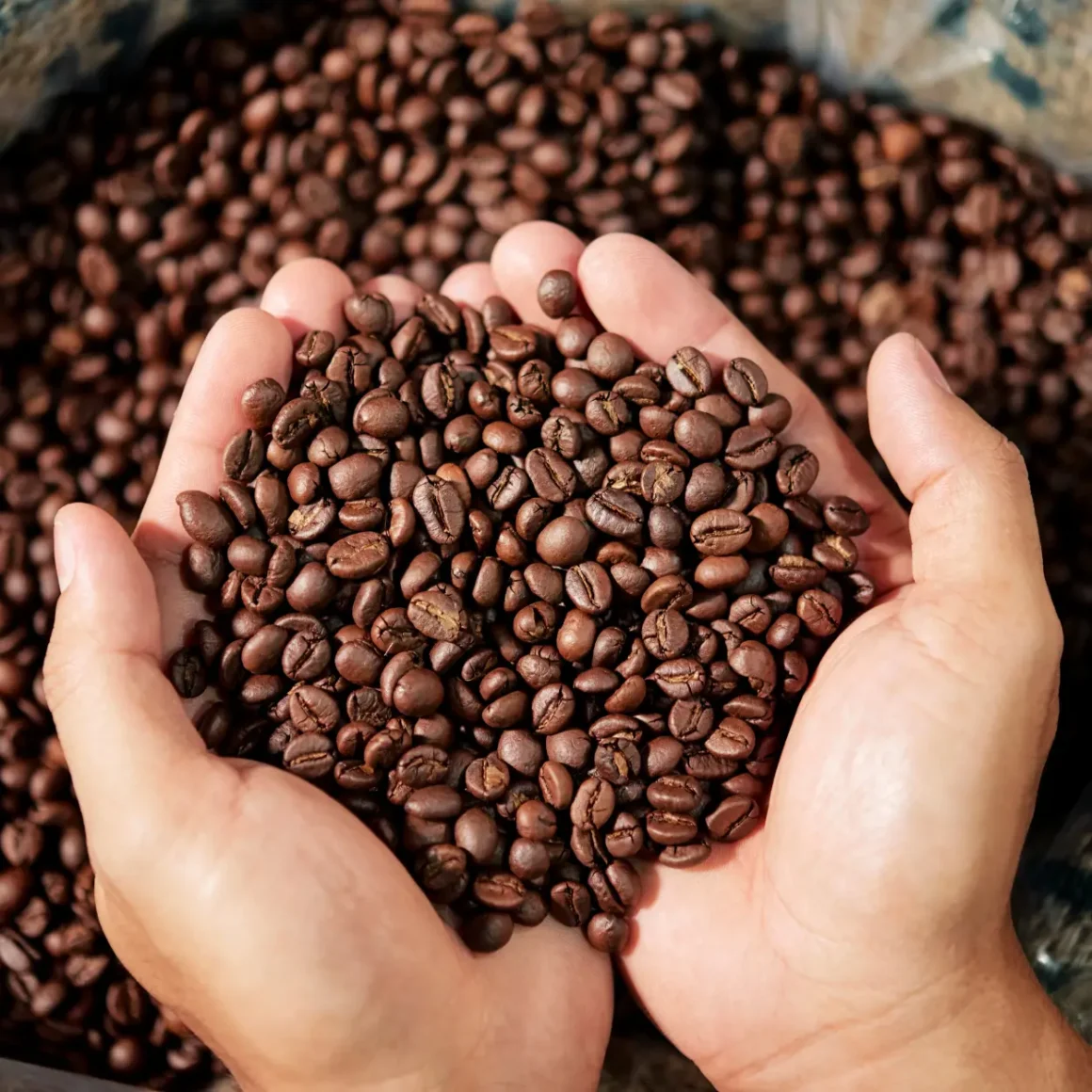
When comparing Espresso Powder vs Instant Espresso, it’s important to examine their ingredient composition and characteristics.
- Simplicity of Ingredients: Both coffee derivatives are made from essentially the same ingredient – coffee beans. The difference lies in the type of bean used and the roasting process.
- Flavor Concentration: In the case of espresso powder vs instant coffee, the former is more concentrated and intensely flavored, owing to its production process designed for culinary use. For Instant Espresso, it’s balanced to suit palates as a drink.
- Caffeine Content: The caffeine content in both products can vary, but generally, it’s higher in the coffee powder due to the concentration of coffee in the powder form.
Overall, while both products originate from coffee beans, their production processes and ingredient profiles differ significantly.
The Taste and Aroma of Espresso Powder and Instant Espresso
Coffee has a wide range of flavors and fragrances, each of which provides a distinct experience. Both coffee products stand out for their different flavor profiles and aromatic properties. While they both come from coffee beans, the manner they are prepared and utilized has a considerable impact on their taste and scent.
Flavor Profiles of Espresso Powder

To truly appreciate the flavor nuances of this coffee powder, let’s delve into its distinctive taste characteristics.
- Intense and Rich: As previously discussed, this coffee powder is known for its highly concentrated flavor. It has a deeper, more robust taste compared to regular coffee due to the dark roast of the beans and the fine grind used in its production.
- Subtle Bitterness: This powder possesses a subtle bitterness, a characteristic feature of espresso, which complements sweet and rich flavors well, particularly in desserts.
Flavor Profiles of Instant Espresso

When it comes to quick espresso fixes, this type of coffee offers a unique flavor profile worth exploring.
- Milder and Balanced: Instant Espresso, in contrast to the coffee powder, offers a more balanced and milder flavor. It’s designed to closely mimic the taste of a freshly brewed espresso, albeit with some limitations due to the instant preparation.
- Quick Espresso Alternative: It serves as a convenient option for those seeking the espresso experience without the need for specialized brewing equipment. The flavor is sufficiently rich to satisfy espresso cravings but is generally lighter than traditional espresso.
Aroma Comparison

Aroma plays a vital role in the overall coffee experience, and it’s intriguing to compare the scents of these two coffee products.
- Espresso Powder: The aroma of the powder is intensely coffee-like, with rich and deep notes that are noticeable even when used in small quantities in cooking and baking.
- Instant Espresso: This coffee derivative has a more pronounced coffee aroma compared to regular instant coffee. Its scent is closer to that of a freshly brewed espresso, although slightly less complex due to the drying process.
To sum up, when considering both products, it’s essential to note the stark differences in their flavor profiles and aromatic qualities. The coffee powder is intensely flavored, and primarily used in culinary applications to enhance the taste of dishes. On the other hand, the instant version provides a more balanced and milder espresso-like flavor and aroma, suitable for drinking.
Culinary Uses for Instant Espresso and Espresso Powder
Coffee’s culinary flexibility extends beyond the cup. These coffee derivatives are two variations that have made their way into kitchens all around the world. While they both come from coffee, their distinct qualities make them excellent for a variety of culinary and baking applications.
Cooking with Espresso Powder
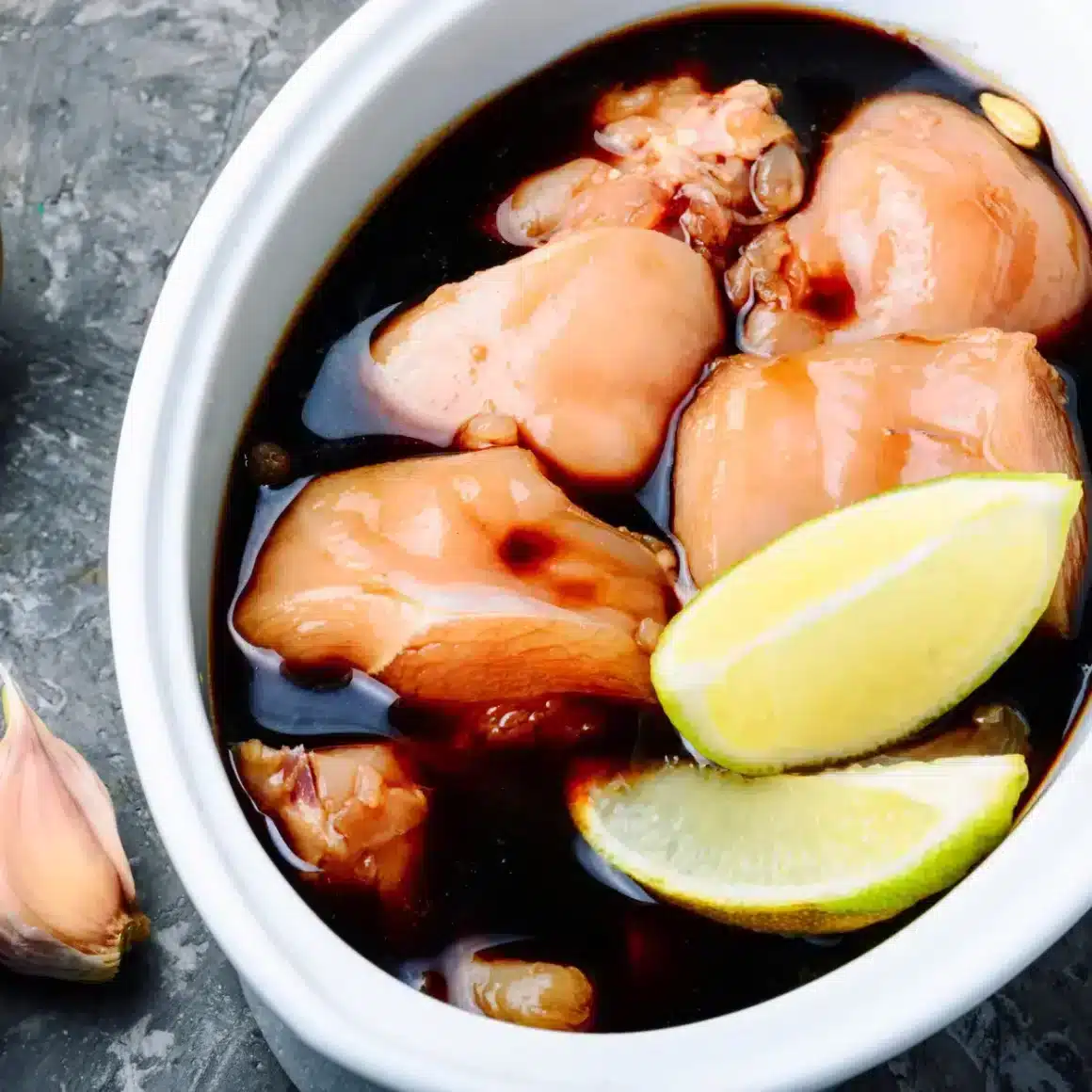
Understand this coffee powder’s culinary possibilities by investigating its function in savory cuisine.
- Enhancing Savory Flavors: This coffee powder is a hidden gem in savory cooking. Its robust and concentrated flavor can deepen and enrich the taste of meat dishes like stews, chili, and barbecue sauces. A small amount goes a long way in adding a complex, savory note.
- Versatility in Dishes: Apart from meats, it can also be used to enhance the flavor of vegetables, soups, and even spice rubs. Its ability to meld with a variety of ingredients without overpowering them makes it a unique addition to many savory recipes.
- A Touch of Bitterness: The subtle bitterness of this powder can balance out the sweetness in dishes, creating a harmonious flavor profile that elevates the overall taste experience.
Baking with Instant Espresso

Explore the possibilities of baking with this type of coffee and its ability to compliment sweetness.
- Complementing Sweetness: this type of coffee, with its milder and more balanced flavor, is a fantastic ingredient in baking. It pairs exceptionally well with chocolate, enhancing its richness without introducing an overwhelming coffee flavor.
- Versatile Ingredient: From chocolate cakes and brownies to tiramisu and cookies, Instant Espresso can be incorporated into a variety of baked goods. It adds a depth of flavor that complements the sweetness of these treats.
- Easy to Use: Its granular form and quick solubility make it easy to integrate into different types of batters and doughs, ensuring a smooth, even distribution of coffee flavor throughout the baked item.
Recipe Ideas

Explore some creative recipe ideas that showcase the versatility of both of these coffee varieties.
- Mocha Chocolate Cake: Use Instant Espresso in the batter to create a rich mocha flavor that complements the chocolate.
- Espresso-Infused Chili: Add a teaspoon of the coffee powder to your chili recipe for a deeper, more complex flavor profile.
- Coffee-Flavored Frosting: Mix the instant version with frosting for a delightful coffee-flavored topping, perfect for cakes and cupcakes.
Overall, both coffee derivatives offer unique flavors and textures that can greatly enhance various dishes. While Espresso Powder is ideal for savory cooking, adding depth and complexity, Instant Espresso is more suited to baking, complementing the sweetness with its balanced coffee flavor.
Considerations and Conclusion
When it comes to choosing between these two coffee products, there are several factors to consider. Each has its unique characteristics, from the way they are brewed to their shelf life and storage requirements. Understanding these differences is crucial in making an informed decision about which product best suits your needs.
Shelf Life and Storage
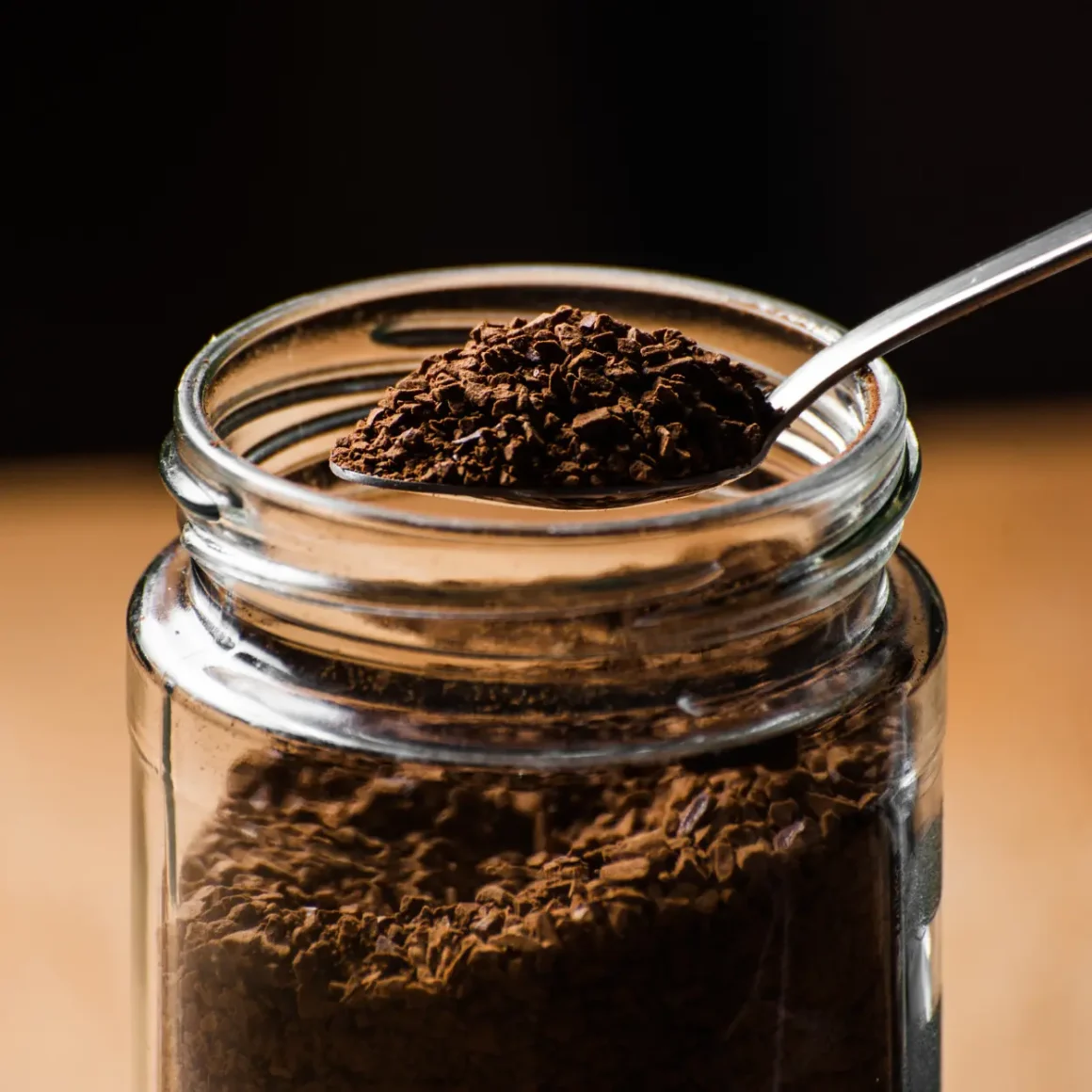
Understanding the shelf life and proper storage of these coffee products is essential to maximize their usability.
- Longevity: Both coffee products have a relatively long shelf life compared to freshly ground coffee or beans. This longevity is due to their dried and processed forms.
- Storage Recommendations: To maintain their best flavor, both should be stored in a cool, dry place. Sealing them in an airtight container can help preserve their aroma and prevent the absorption of moisture or odors from the environment. (3)
Which One Should You Choose?

When it comes to choosing between Espresso Powder, Instant Espresso, or even comparing them to regular instant coffee, consider your specific preferences and needs.
- Espresso Powder vs Instant Espresso: The choice between both coffee derivatives depends largely on how you plan to use it. If you’re a baking enthusiast or enjoy experimenting with flavors in cooking, Espresso Powder is your go-to choice. Its ability to enhance a variety of dishes without imparting a strong coffee taste makes it a versatile ingredient in the kitchen.
- Instant Coffee vs Espresso Powder: For those who prefer a quick, hassle-free espresso drink, Instant coffee is the better option. It offers much more convenience and practicality.
Summing up, the decision between these coffee varieties hinges on your personal preferences and intended use. Whichever you choose, each brings its unique qualities to the table, enriching your culinary and coffee experiences.
FAQ
How are espresso powder and instant espresso produced?
The coffee powder is made by darkly roasting, brewing, and then drying espresso beans into a fine powder, while the instant is produced by brewing espresso beans, freeze-drying, and then granulating them.
Do espresso powder and instant espresso have different flavor profiles?
Yes, the coffee powder has a more intense and concentrated flavor, suitable for culinary uses, whereas the instant version has a lighter, more balanced taste, ideal for drinking.
What are some culinary applications for these coffee products?
The powder is used to enhance the flavor of chocolates, cakes, and savory dishes in cooking and baking, while the instant version is mainly used for quick coffee beverages and can also be incorporated into baking recipes.
What factors should be considered when deciding between espresso powder and instant espresso?
Consider the intended use (culinary vs. beverage), flavor preference (intense vs. balanced), and the convenience of preparation when choosing between these coffee derivatives.
